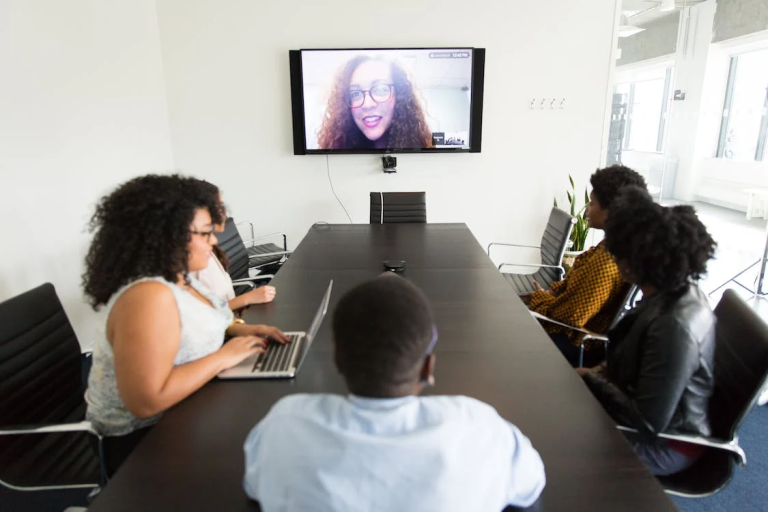In today’s fast-paced business world, the corporate learning landscape is constantly evolving. Companies need to stay ahead by offering their employees high-quality, engaging learning experiences that help them stay competitive and knowledgeable. A LMS is one of the most effective tools for improving student learning. Using the appropriate LMS may significantly enhance how corporate eLearning is provided and consumed, resulting in improved outcomes for both individuals and businesses. In this article, we’ll explore seven effective tips on how can technology enhance student learning.
Use the Right Tools
The success of any eLearning program begins with selecting the right tools on how to improve learning experience. Choosing an efficient platform, such as Drived.space, is crucial for delivering engaging and better learning experiences. A robust LMS offers features like easy content delivery, tracking of learner progress, interactive elements, and much more.
When choosing an LMS, consider factors such as user interface, scalability, content integration, and reporting tools. The system should be intuitive and customizable to meet the unique needs of your organization. Additionally, ensure that it supports mobile learning and integrates with other enterprise software solutions. A well-designed platform can significantly enhance students learning experience by providing seamless access to courses and materials.
Personalize the Learning Journey
To keep learners interested, include customization into your corporate eLearning approach. One-size-fits-all training programs frequently fail to address the unique demands of employees, who have varying talents, learning preferences, and career objectives. Personalizing the learning experience ensures that learners receive material that is relevant and tailored to their own requirements.
An efficient LMS enables administrators to design personalized learning pathways for each employee depending on their position, performance, or learning preferences. These methods of improving learning increase student engagement while also accelerating information retention and skill improvement. Personalization might involve delivering adaptive learning modules, giving learners a variety of material types (videos, articles, or podcasts), and proposing courses based on previous performance and interests.
Implement Problem-Based Learning
Another option to improve the corporate eLearning experience is to implement problem-based learning (PBL). This technique entails presenting real-life difficulties and scenarios for employees to address, so encouraging critical thinking and practical abilities. PBL promotes active engagement and allows students to apply theoretical knowledge to real-world problems, hence improving the learning experience.
For example, in a sales training module, instead of just going through generic sales techniques, create scenarios where employees must close a deal with a difficult client. By solving these problems, employees not only acquire technical skills but also develop soft skills such as negotiation and conflict resolution.
Use Gamification Elements
Gamification has shown to be an excellent method for improving the learning experience and increasing student engagement. Leaderboards, badges, and prizes are used to inspire learners to complete activities, accomplish goals, and compete with their peers. These aspects draw on human psychology, making learning enjoyable and gratifying.
When done correctly, gamification stimulates engagement while also improving information retention. It fosters a sense of accomplishment and development, keeping students engaged. For example, providing digital badges for completing courses or mastering a skill may increase learner engagement and foster a competitive yet collaborative atmosphere.
Gamification may also be improved with an LMS that monitors progress and shows accomplishments. This enables students to assess their success and remain motivated throughout their learning journey. These are great ways to enhance student learning.
Encourage Peer-to-Peer Learning
Peer-to-peer learning encourages cooperation and information exchange inside an organization. Employees may share their skills, mentor one another, and collaborate to solve challenges, resulting in a helpful learning environment. This informal learning strategy is very beneficial since it helps students to absorb information in a more natural and relevant manner.
Peer-to-peer learning may be included into your corporate eLearning strategy via discussion forums, collaborative projects, and peer assessments. Encouraging employees to engage in group activities or share their insights with others will not only improve the learning experience but also create a culture of continuous learning within the organization.
An LMS like DrivEd can support peer-to-peer learning through features like discussion boards, team-based assignments, and social learning tools. These features facilitate interaction and collaboration among learners, enhancing the overall learning experience. They are great ways to enhance learning.
Leverage Multimedia and Immersive Technologies
The traditional text-heavy approach to eLearning is no longer sufficient to capture the attention of today’s learners. To enhance the learning experience, companies should leverage multimedia and immersive technologies such as videos, interactive quizzes, simulations, and virtual reality (VR).
Multimedia elements cater to different learning styles and make content more engaging. For example, adding instructional films can assist visual learners in better understanding complicated concepts, whereas interactive simulations allow learners to practice skills in a safe and controlled setting. VR, in particular, provides immersive learning experiences that allow employees to practice skills in a realistic context, hence increasing retention and engagement.
Organizations may build more dynamic and powerful eLearning programs by incorporating cutting-edge technology to enhance student learning. This not only enhances the learner’s experience, but also leads to higher learning results.
Foster a Supportive Learning Environment
Creating a friendly learning environment is critical to the success of any business eLearning project. Employees should be encouraged and driven to learn, knowing that the business prioritizes their growth. To create this climate, managers should actively encourage learning by providing feedback, praising accomplishments, and offering advice throughout the learning process.
Companies can also put in place learning support mechanisms such as mentoring programs, coaching, and access to materials including articles, case studies, and expert webinars. Employees are more inclined to participate in eLearning programs when they believe their learning efforts are recognized and rewarded.
Creating chances for learners to apply their newly gained abilities in the workplace is another aspect of fostering a culture of continuous learning. This may be accomplished by establishing stretch tasks, fostering cross-departmental collaboration, and offering forums for information sharing.
Conclusion
Improving the corporate eLearning experience is essential for businesses that want to foster a culture of continuous development and innovation. By implementing these seven strategies — choosing the right tools, personalizing the learning journey, incorporating problem-based learning, using gamification, encouraging peer-to-peer learning, leveraging multimedia, and fostering a supportive learning environment — organizations can create engaging and effective eLearning programs.
Technology is important to improving the learning experience, and platforms such as DrivEd provide the tools required to make corporate learning more dynamic and successful.
Guest writer.













